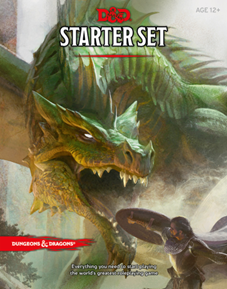 Playing Dungeons & Dragons well requires several skills. You don’t need to be great in all of them, but it helps to have some familiarity with all of them. For parts of the game like role-playing and exploration, you get better at them with practice. This is especially true of role-playing. The more you speak to DM-controlled characters, the better you get at it. I’m quite good at it now. I was hopeless when I started. You can get better!
Playing Dungeons & Dragons well requires several skills. You don’t need to be great in all of them, but it helps to have some familiarity with all of them. For parts of the game like role-playing and exploration, you get better at them with practice. This is especially true of role-playing. The more you speak to DM-controlled characters, the better you get at it. I’m quite good at it now. I was hopeless when I started. You can get better!
However, one aspect of the game which you do have control over is in knowing what you character can do, mechanically speaking. This is especially true of combat situations, where a group of players who know what they can do and can work together are far superior to a bunch of rag-tag adventures who don’t even realize that Healing Word can be used along with another attack!
It’s worthwhile reviewing what your character can do every so often, especially after you gain a few levels. It should be noted that the official character sheets are very good at not showing you what you can do. I strongly suggest that you get a blank piece of paper, and start making a new list. Writing it all out will help you remember it all later – and you can use the sheet to refer to in the game.
Part of the point of this is to get used to the differences between your abilities and attacks. Lightning Arrow is an attack, but Hunter’s Mark is a modifier to your attacks. By categorizing the abilities, you can get a better handle on what works together and what you can do. Likewise, keeping track of the action type (and whether an ability requires concentration) is also important.
Here’s one suggested format of the sheet; I’m sure you can improve on it.
Attacks – list all the ways you have of attacking/damaging monsters here. Use the following columns:
- Name
- Action Type (e.g. Action, Bonus Action, Reaction, None)
- Number of Attacks
- Attack Roll/Saving Throw
- Range of Attack
- Damage Roll
- Average Damage
- Additional Effects
Modifiers – list all the ways you have of changing the effectiveness of attacks, saving throws and checks. Use the following columns:
- Name
- Action Type
- Modifier
- Range
- Conditions & Notes (what allows the modifier to work)
Other – list all abilities that don’t fall under the above categories
- Name
- Action Type
- Range
- Effects
A few sample entries:

